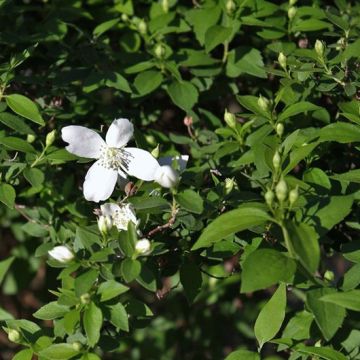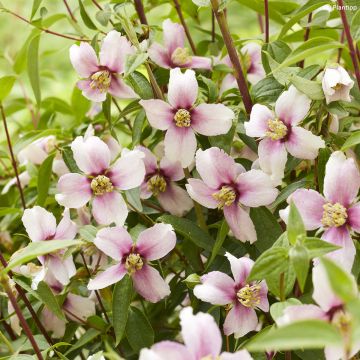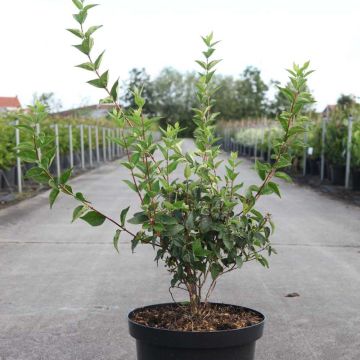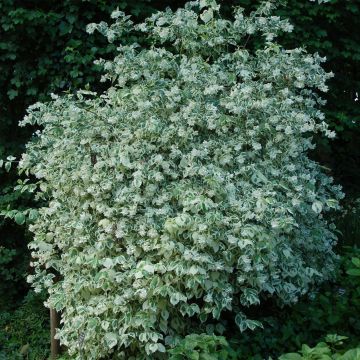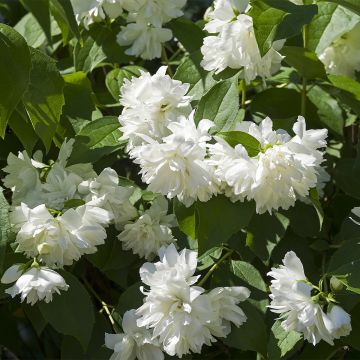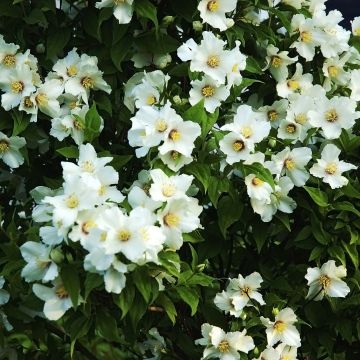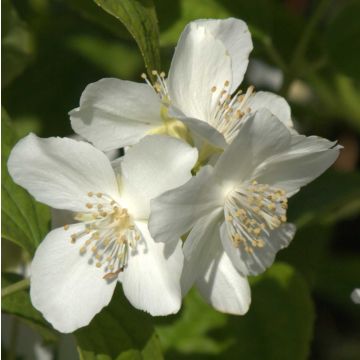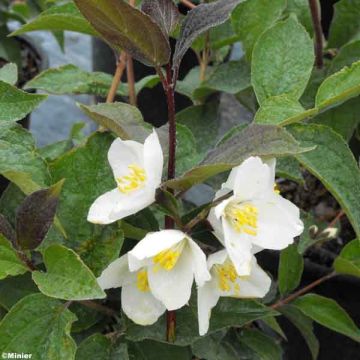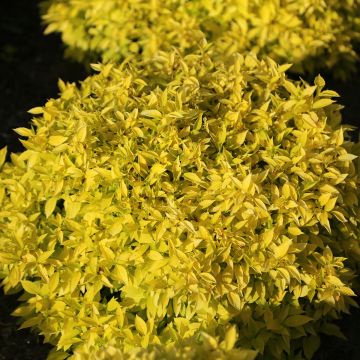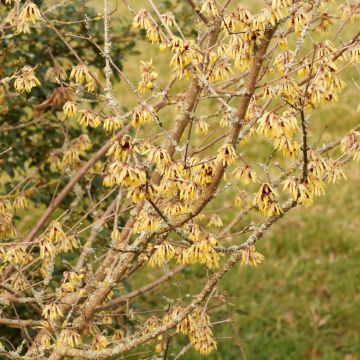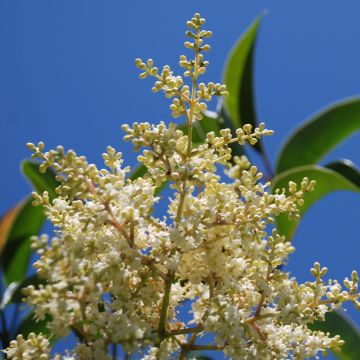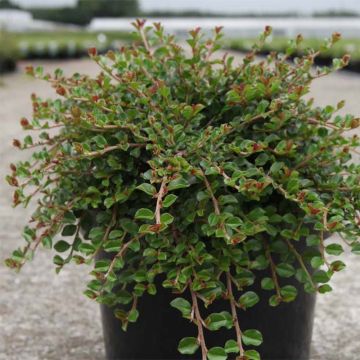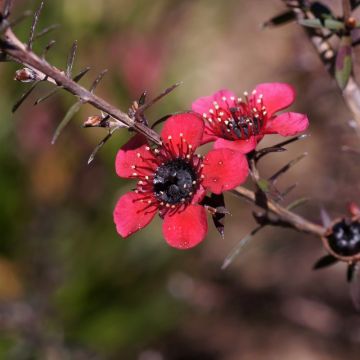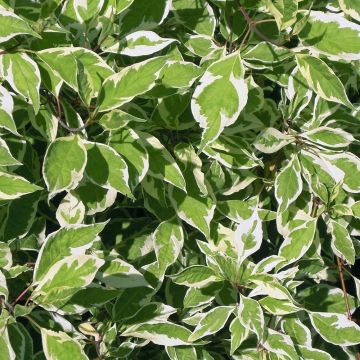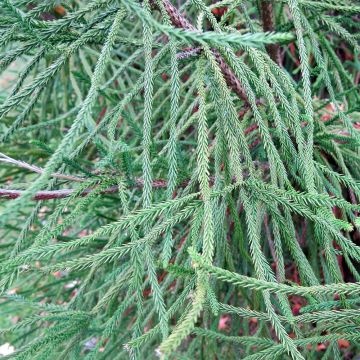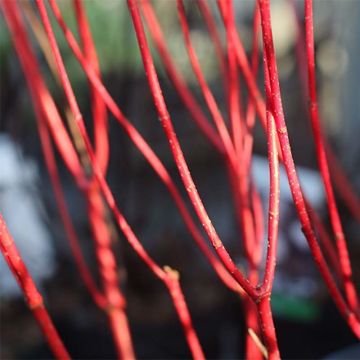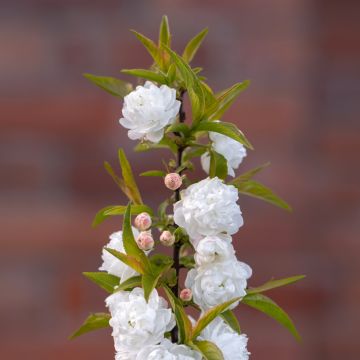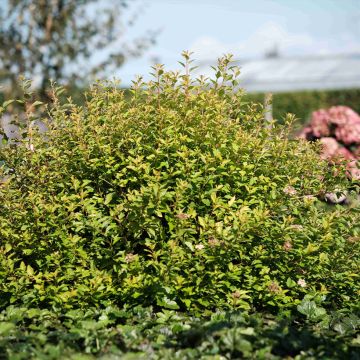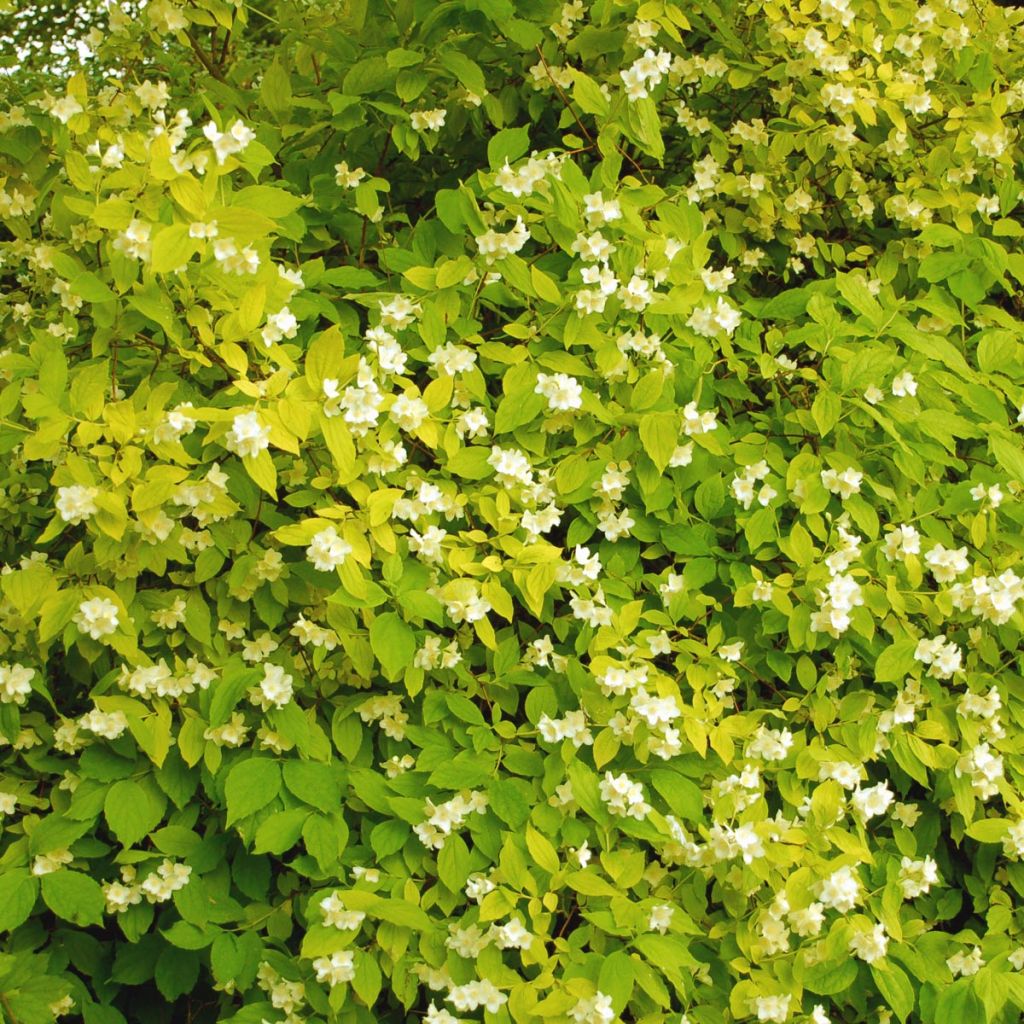

Philadelphus coronarius Aureus - Mock Orange
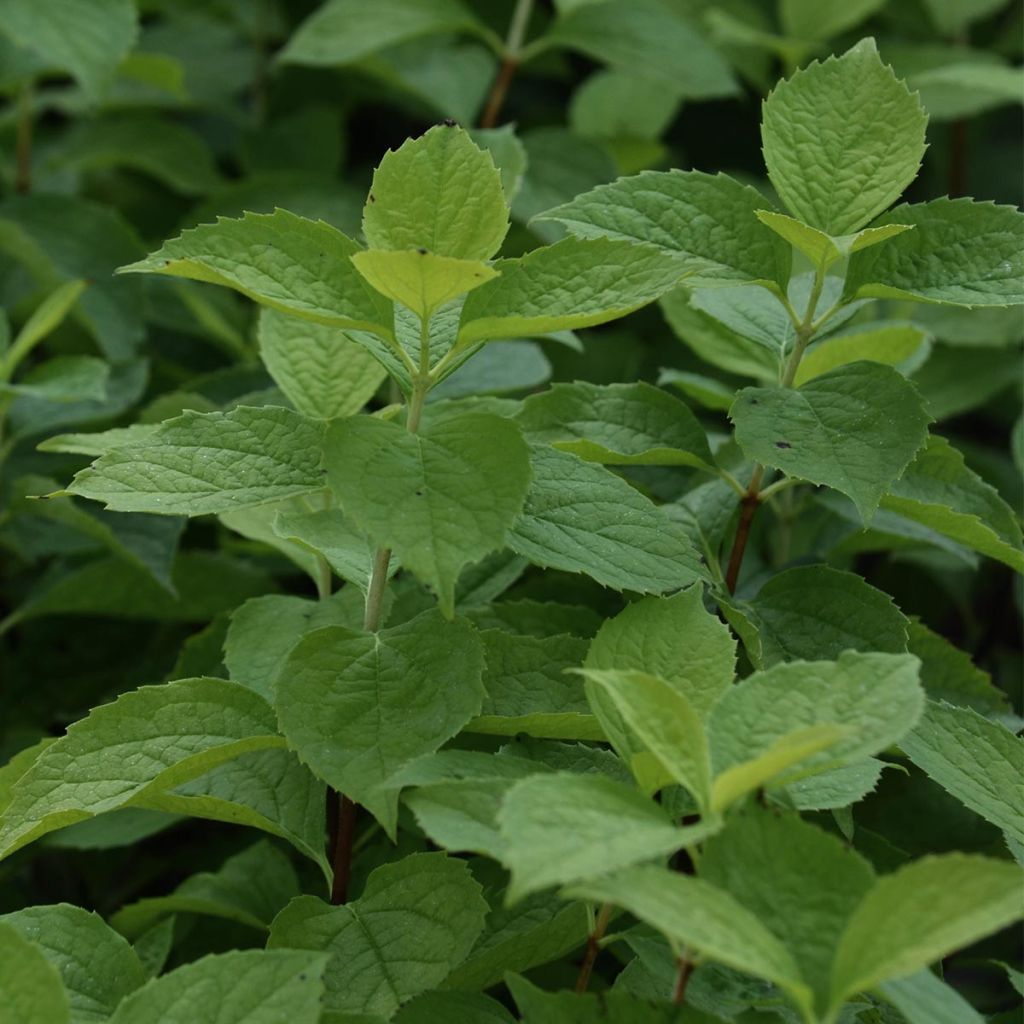

Philadelphus coronarius Aureus - Mock Orange
Philadelphus coronarius Aureus - Mock Orange
Philadelphus coronarius Aureus
Mock Orange
This item cannot be shipped to the selected country
Delivery charge from €5.90
Delivery charge from €5.90
Delivery charge from €5.90
More information
Schedule delivery date,
and select date in basket
This plant carries a 24 months recovery warranty
More information
We guarantee the quality of our plants for a full growing cycle, and will replace at our expense any plant that fails to recover under normal climatic and planting conditions.
From €5.90 for pickup delivery and €6.90 for home delivery
Express home delivery from €8.90.
From €5.90 for pickup delivery and €6.90 for home delivery
Express home delivery from €8.90.
From €5.90 for pickup delivery and €6.90 for home delivery
Express home delivery from €8.90.

Does this plant fit my garden?
Set up your Plantfit profile →
Description
Philadelphus coronarius 'Aureus' or Golden Mock Orange, is a deciduous bush, whose remarkable late spring white-cream flowering, on a magnificent golden foliage, will intoxicate the garden with its enchanting fragrance. Sublime!
Belonging to the Hydrangea family, Philadelphus coronarius also known as Mock Orange or Poet's Jasmine, is native to southern Europe and Asia Minor. The Golden Mock Orange is an ornamental deciduous bush, with shallow root system, whose brown bark tends to peel off with age. It forms an upright and rigid ball, with abundant and vigorous growth. Its main branches are very upright and its secondary branches are more arched and loose. Of medium size, it measures up to 2m (7ft 6in) high and 1.50m (5ft) wide. In late spring and early summer, it is adorned with clusters of single 4-petalled flowers, white-cream in colour, 2.5cm (1in) in size, with white and golden yellow stamens, very powerfully scented. This 'Aureus' variety compensates for a less abundant flowering than the typical species, with an extremely decorative foliage. Its leaves are ovate and finely toothed, with a glaucous underside bearing some hairs towards the base, and measure from 4 to 9cm (1.6 - 3.5in). The colour of its foliage, very bright and vibrant, is yellow-golden in spring on young shoots, turning chartreuse green in summer, and adorned with exceptional colours in autumn.
This Golden Poet's Jasmine, suitable for all types of gardens, very easy to grow and ideal for beginner gardeners, enjoys being planted in a sunny or semi-shaded position in ordinary soil, even limestone. Of fairly slow but regular growth, it will be perfect as a standalone specimen, in the background of mixed borders, in association with other bushes, in a flowering country hedge, or even grown in a container. Consider planting it near the house, terrace, or pathways to fully enjoy its intense fragrance. Planted in semi-shade, it will illuminate the garden with the yellow colour of its foliage and the whiteness of its flowers. Create sumptuous foliage contrasts by placing it near bushes with purple, bronze leaves... Since its flowering is quite brief, consider associating it with bushes that flower earlier or later. Letting a clematis or a shrub rose with flexible branches climb in its somewhat stiff branches will give a wild and charming touch to your mock orange. It also allows beautiful associations with perennial plants with colorful foliage.
This variety was awarded the Award of Garden Merit in 1993, which corresponds to the gold medal of the plant world awarded by the Royal Horticultural Society.
In ancient Persia, the white and scented flowers of Philadelphus coronarius were used to make fragrant crowns.
Report an error about the product description
Philadelphus coronarius Aureus - Mock Orange in pictures
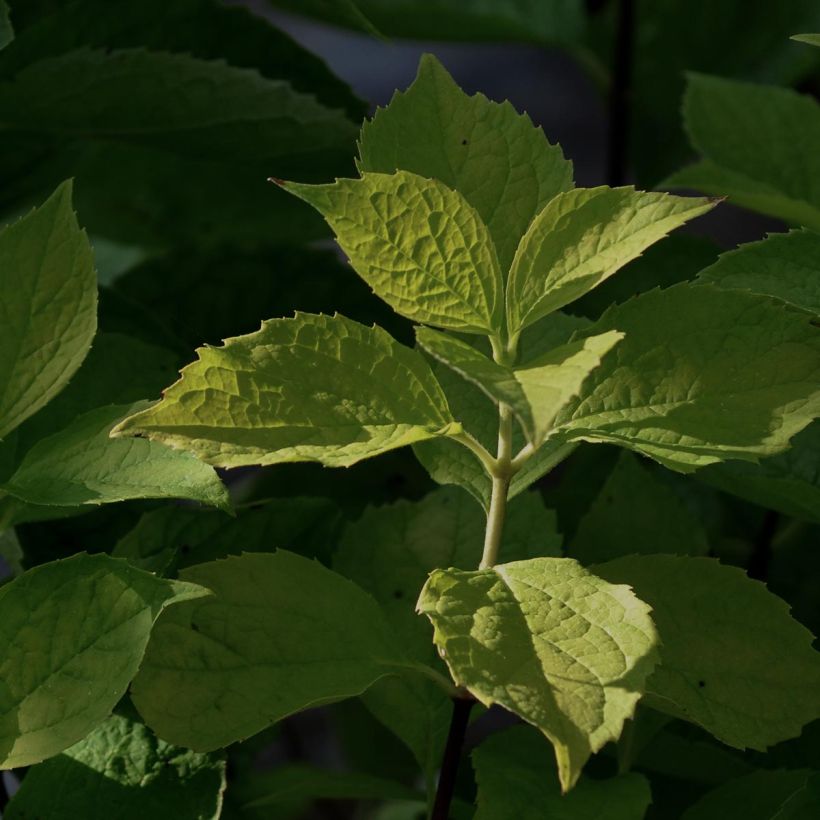



Plant habit
Flowering
Foliage
Botanical data
Philadelphus
coronarius
Aureus
Hydrangeaceae
Mock Orange
Cultivar or hybrid
Other Philadelphus - Mock Orange
Planting and care
Philadelphus coronarius 'Aureus' is very easy to grow, requiring very little maintenance and very accommodating, is a bush well suited to all gardens, ideal for beginner gardeners. Ordinary, poor, even calcareous soil, not too dry to fresh, suits it. However, it will prefer a fresh, well-drained and humus-bearing soil. Very hardy, it can withstand negative temperatures down to -20°C (-4 °F). Planting is done in early spring or autumn, preferably in partial shade or in non-burning sun, and in a sheltered position from strong winds. Excessive heat exposure could damage its bright foliage. Flowering on the previous year's shoots, Philadelphus coronarius should be pruned after flowering, in July-August, by shortening the flowering branches by a third of their length. A more severe pruning can be done every 2 to 3 years to keep it compact and highly floriferous. Simply do not hesitate to cut the old wood and too long branches down to the base of the plant to encourage it to branch out from the base. A resistant bush, it may however be susceptible to powdery mildew and black aphids.
Planting period
Intended location
Care
-
, onOrder confirmed
Reply from on Promesse de fleurs
Hedge shrubs
Haven't found what you were looking for?
Hardiness is the lowest winter temperature a plant can endure without suffering serious damage or even dying. However, hardiness is affected by location (a sheltered area, such as a patio), protection (winter cover) and soil type (hardiness is improved by well-drained soil).

Photo Sharing Terms & Conditions
In order to encourage gardeners to interact and share their experiences, Promesse de fleurs offers various media enabling content to be uploaded onto its Site - in particular via the ‘Photo sharing’ module.
The User agrees to refrain from:
- Posting any content that is illegal, prejudicial, insulting, racist, inciteful to hatred, revisionist, contrary to public decency, that infringes on privacy or on the privacy rights of third parties, in particular the publicity rights of persons and goods, intellectual property rights, or the right to privacy.
- Submitting content on behalf of a third party;
- Impersonate the identity of a third party and/or publish any personal information about a third party;
In general, the User undertakes to refrain from any unethical behaviour.
All Content (in particular text, comments, files, images, photos, videos, creative works, etc.), which may be subject to property or intellectual property rights, image or other private rights, shall remain the property of the User, subject to the limited rights granted by the terms of the licence granted by Promesse de fleurs as stated below. Users are at liberty to publish or not to publish such Content on the Site, notably via the ‘Photo Sharing’ facility, and accept that this Content shall be made public and freely accessible, notably on the Internet.
Users further acknowledge, undertake to have ,and guarantee that they hold all necessary rights and permissions to publish such material on the Site, in particular with regard to the legislation in force pertaining to any privacy, property, intellectual property, image, or contractual rights, or rights of any other nature. By publishing such Content on the Site, Users acknowledge accepting full liability as publishers of the Content within the meaning of the law, and grant Promesse de fleurs, free of charge, an inclusive, worldwide licence for the said Content for the entire duration of its publication, including all reproduction, representation, up/downloading, displaying, performing, transmission, and storage rights.
Users also grant permission for their name to be linked to the Content and accept that this link may not always be made available.
By engaging in posting material, Users consent to their Content becoming automatically accessible on the Internet, in particular on other sites and/or blogs and/or web pages of the Promesse de fleurs site, including in particular social pages and the Promesse de fleurs catalogue.
Users may secure the removal of entrusted content free of charge by issuing a simple request via our contact form.
The flowering period indicated on our website applies to countries and regions located in USDA zone 8 (France, the United Kingdom, Ireland, the Netherlands, etc.)
It will vary according to where you live:
- In zones 9 to 10 (Italy, Spain, Greece, etc.), flowering will occur about 2 to 4 weeks earlier.
- In zones 6 to 7 (Germany, Poland, Slovenia, and lower mountainous regions), flowering will be delayed by 2 to 3 weeks.
- In zone 5 (Central Europe, Scandinavia), blooming will be delayed by 3 to 5 weeks.
In temperate climates, pruning of spring-flowering shrubs (forsythia, spireas, etc.) should be done just after flowering.
Pruning of summer-flowering shrubs (Indian Lilac, Perovskia, etc.) can be done in winter or spring.
In cold regions as well as with frost-sensitive plants, avoid pruning too early when severe frosts may still occur.
The planting period indicated on our website applies to countries and regions located in USDA zone 8 (France, United Kingdom, Ireland, Netherlands).
It will vary according to where you live:
- In Mediterranean zones (Marseille, Madrid, Milan, etc.), autumn and winter are the best planting periods.
- In continental zones (Strasbourg, Munich, Vienna, etc.), delay planting by 2 to 3 weeks in spring and bring it forward by 2 to 4 weeks in autumn.
- In mountainous regions (the Alps, Pyrenees, Carpathians, etc.), it is best to plant in late spring (May-June) or late summer (August-September).
The harvesting period indicated on our website applies to countries and regions in USDA zone 8 (France, England, Ireland, the Netherlands).
In colder areas (Scandinavia, Poland, Austria...) fruit and vegetable harvests are likely to be delayed by 3-4 weeks.
In warmer areas (Italy, Spain, Greece, etc.), harvesting will probably take place earlier, depending on weather conditions.
The sowing periods indicated on our website apply to countries and regions within USDA Zone 8 (France, UK, Ireland, Netherlands).
In colder areas (Scandinavia, Poland, Austria...), delay any outdoor sowing by 3-4 weeks, or sow under glass.
In warmer climes (Italy, Spain, Greece, etc.), bring outdoor sowing forward by a few weeks.


































